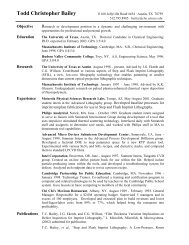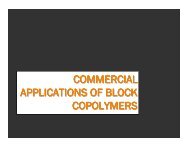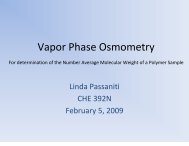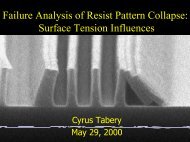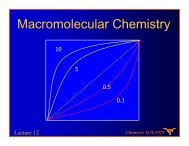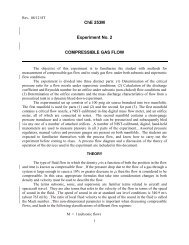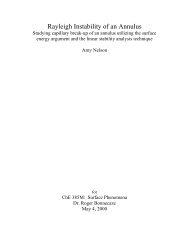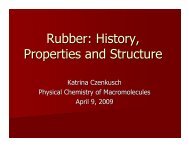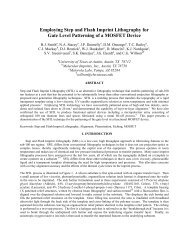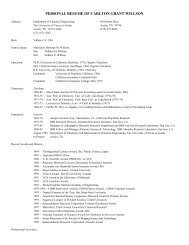Asymmetric fluid-structure dynamics in nanoscale imprint lithography
Asymmetric fluid-structure dynamics in nanoscale imprint lithography
Asymmetric fluid-structure dynamics in nanoscale imprint lithography
- No tags were found...
Create successful ePaper yourself
Turn your PDF publications into a flip-book with our unique Google optimized e-Paper software.
Chapter 2: Theoretical AnalysisThe first step taken to model a physical system is to understand thephysics of the system. The SFIL system considered here is comprised of aquartz template (T), a photosensitive, etch barrier <strong>fluid</strong> (F), and a flat wafersubstrate supported by a vacuum chuck (W). The TFW system has been modeledas a squeeze film flow between two flat surfaces. Different assumptions about thegeometry of the system lead to slightly modified analytic equations for thepressure distribution due to the liquid etch barrier.2.1 INTRODUCTIONThe development of a reliable, high-throughput step and flash impr<strong>in</strong>t<strong>lithography</strong> process requires an improved understand<strong>in</strong>g of the <strong>in</strong>teractionbetween the etch barrier layer and the flexure stages, which orient the template.The step required to expel the excess liquid etch barrier between the template andthe wafer substrate is a critical and rate-limit<strong>in</strong>g step <strong>in</strong> the SFIL process. Theetch<strong>in</strong>g process requires that the base layer thickness be on the order of theaverage feature height, which is about 200 nm <strong>in</strong> the current process. Forthroughput to be competitive with <strong>in</strong>dustry standard processes, this step should becompleted <strong>in</strong> about 0.5 seconds because time must also be allocated fortranslation of the x-y stage, dispens<strong>in</strong>g the etch barrier, and expos<strong>in</strong>g the etchbarrier. In this short time <strong>in</strong>terval, the gap between the template and the substratehas to be reduced from several microns to 100-200 nm. This also requires that theorientation misalignment must be less than 0.5 µrad if the difference between the17



